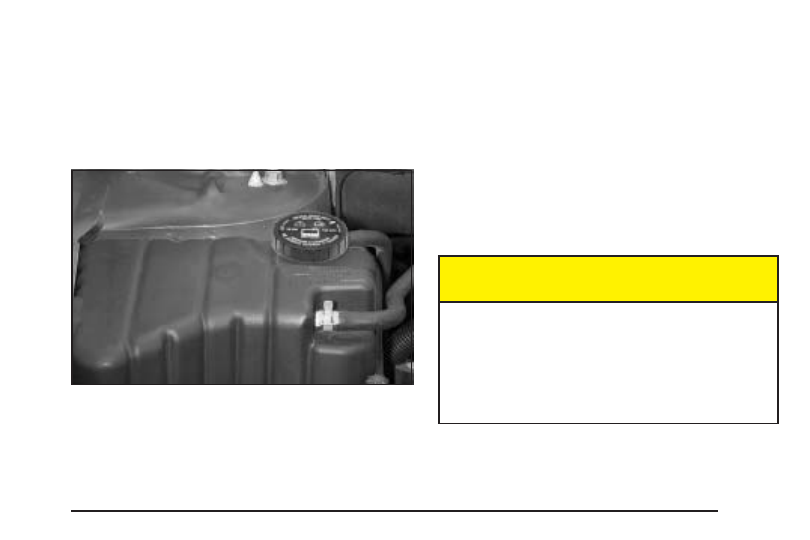Pontiac Bonneville (2005 year). Manual - part 19

If you have to add coolant more than four times a year,
have your dealer check your cooling system.
Notice: If you use the proper coolant, you do not
have to add extra inhibitors or additives which claim
to improve the system. These can be harmful.
Checking Coolant
The engine coolant surge tank is located toward the
rear of the engine compartment on the passenger’s side
of the vehicle. See Engine Compartment Overview on
page 5-12 for more information on location.
The vehicle must be on a level surface. When your
engine is cold, the coolant level should be at the FULL
COLD mark which is located on the side of the surge
tank that faces the engine.
If the LOW ENGINE COOLANT message comes on and
stays on, it means you are low on engine coolant.
See DIC Warnings and Messages on page 3-62 for
more information.
Adding Coolant
If you need more coolant, add the proper DEX-COOL
®
coolant mixture at the surge tank, but only when the
engine is cool.
{
CAUTION:
Turning the surge tank pressure cap when the
engine and radiator are hot can allow steam
and scalding liquids to blow out and burn you
badly. Never turn the surge tank pressure
cap — even a little — when the engine and
radiator are hot.
5-35